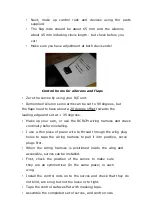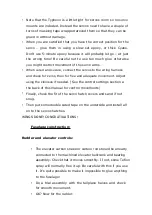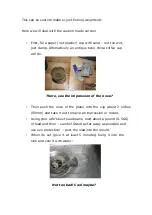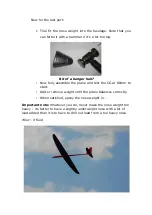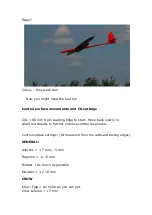
Now for the last part:
• Trial fit the nose weight into the fuselage. Note that you
can fettle it with a hammer if it’s a bit too big:
Bit of a banger huh?
•
Now fully assemble the plane and test the CG at 80mm to
start.
•
Add or remove weight until the plane balances correctly.
•
When satisfied, epoxy the nose weight in.
Important note: Whatever you do, never make the nose weight too
heavy – its better to have a slightly underweight nose with a bit of
lead added than it is to have to drill out lead from a too heavy nose.
Wow – it flies!



